The Medawar Lecture 2001 knowledge for vision: vision for knowledge
- PMID: 16147519
- PMCID: PMC1569493
- DOI: 10.1098/rstb.2005.1662
The Medawar Lecture 2001 knowledge for vision: vision for knowledge
Abstract
An evolutionary development of perception is suggested-from passive reception to active perception to explicit conception-earlier stages being largely retained and incorporated in later species. A key is innate and then individually learned knowledge, giving meaning to sensory signals. Inappropriate or misapplied knowledge produces rich cognitive phenomena of illusions, revealing normally hidden processes of vision, tentatively classified here in a 'periodic table'. Phenomena of physiology are distinguished from phenomena of general rules and specific object knowledge. It is concluded that vision uses implicit knowledge, and provides knowledge for intelligent behaviour and for explicit conceptual understanding including science.
Figures
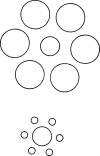


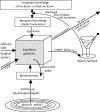



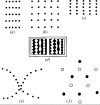



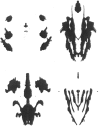

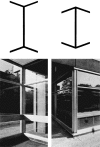
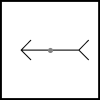
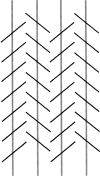




Similar articles
-
Phantom perception: voluntary and involuntary nonretinal vision.Trends Cogn Sci. 2015 May;19(5):278-84. doi: 10.1016/j.tics.2015.03.004. Epub 2015 Apr 8. Trends Cogn Sci. 2015. PMID: 25863415 Review.
-
Scale-invariance in brightness illusions implicates object-level visual processing.Sci Rep. 2014 Jan 29;4:3900. doi: 10.1038/srep03900. Sci Rep. 2014. PMID: 24473496 Free PMC article.
-
[Picture perception and psychology of vision].Nihon Hoshasen Gijutsu Gakkai Zasshi. 2004 Apr;60(4):455-9. doi: 10.6009/jjrt.kj00000922387. Nihon Hoshasen Gijutsu Gakkai Zasshi. 2004. PMID: 15159661 Review. Japanese. No abstract available.
-
Seeing things: illusory contours in the human visual brain.J Neurosci. 2007 May 16;27(20):5269-70. doi: 10.1523/JNEUROSCI.1126-07.2007. J Neurosci. 2007. PMID: 17507549 Free PMC article. Review. No abstract available.
-
Knowledge in perception and illusion.Philos Trans R Soc Lond B Biol Sci. 1997 Aug 29;352(1358):1121-7. doi: 10.1098/rstb.1997.0095. Philos Trans R Soc Lond B Biol Sci. 1997. PMID: 9304679 Free PMC article. Review.
Cited by
-
Rationality, perception, and the all-seeing eye.Psychon Bull Rev. 2017 Aug;24(4):1040-1059. doi: 10.3758/s13423-016-1198-z. Psychon Bull Rev. 2017. PMID: 27928763 Free PMC article. Review.
-
Is simple reaction time affected by visual illusions?Exp Brain Res. 2010 Mar;201(2):345-50. doi: 10.1007/s00221-009-2023-y. Epub 2009 Sep 26. Exp Brain Res. 2010. PMID: 19784639
-
Consciousness: a neural capacity for objectivity, especially pronounced in humans.Front Psychol. 2014 Mar 17;5:223. doi: 10.3389/fpsyg.2014.00223. eCollection 2014. Front Psychol. 2014. PMID: 24672506 Free PMC article.
-
Cultural differences in perceptual reorganization in US and Pirahã adults.PLoS One. 2014 Nov 20;9(11):e110225. doi: 10.1371/journal.pone.0110225. eCollection 2014. PLoS One. 2014. PMID: 25411970 Free PMC article.
-
The turn of the dice: Patrick Hughes' Hollow Dice and Reverspectives.Iperception. 2023 Apr 28;14(2):20416695231165623. doi: 10.1177/20416695231165623. eCollection 2023 Mar-Apr. Iperception. 2023. PMID: 37213436 Free PMC article.
References
-
- Aglioti S, DeSouza J.F.X, Goodale M.A. Size-contrast illusions deceive the eye but not the hand. Curr. Biol. 1995;5:679–685. - PubMed
-
- Biederman I. Recognition-by-components: A theory of human image understanding. Psychological Rev. 1987;94:115–147. - PubMed
-
- Blakemore C, Sutton P. Size adaptation: a new after-effect. Science. 1969;166:245–247. - PubMed
-
- Bodmer Sir Walter. The public understanding of science. Sci. Public Aff. 1987;2:69–89.
-
- Bodmer Sir Walter, et al. The Royal Society; London: 1985. The public understanding of science.
Publication types
MeSH terms
LinkOut - more resources
Full Text Sources

